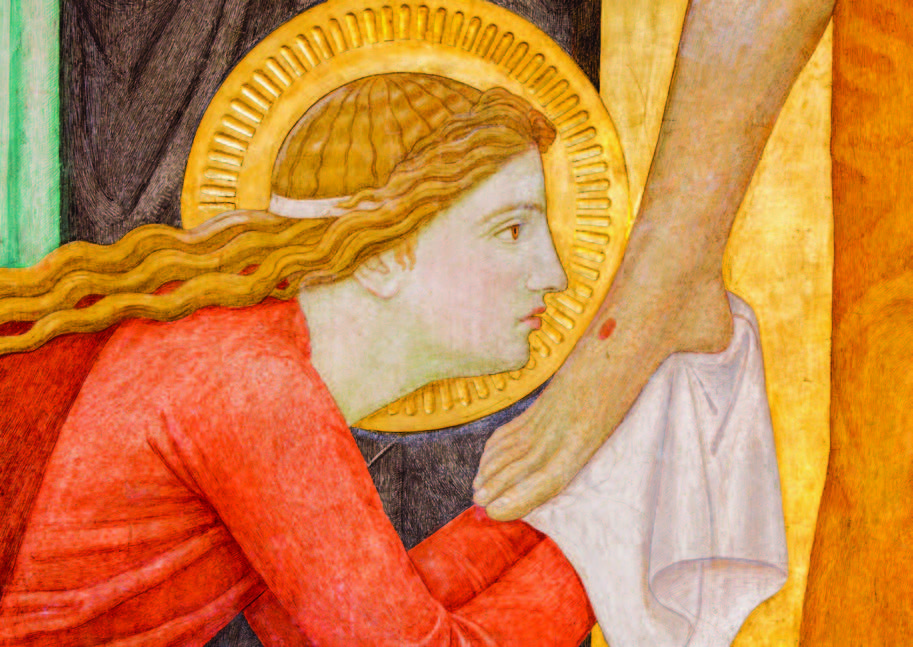It seems to me that no person in Scripture has been mischaracterized or surrounded by as much speculation as Mary Magdalene. Identified in the Gospel of Luke as the one “from whom seven demons had gone out,” she is also listed among the women who contributed to the support of Jesus during his public ministry.
Some Scripture scholars suggest that she came from a prominent family in Magdala, a bustling pagan seaport in Galilee during the time of Jesus. This would account for her wealth and explain why she is often referred to as Mary of Magdala. Unfortunately, by the fifth century, her reputation took a negative turn.
Despite the lack of moral judgement regarding those from whom Jesus exorcised demons, Pope Gregory the Great referred to Mary Magdalene as a prostitute who “turned the mass of her crimes to virtue.” Throughout the centuries, confusion about Mary Magdalene’s identity was perpetuated, interchanging her identity with Mary of Bethany and the unnamed sinner in Luke’s Gospel who anointed Christ’s feet.
Long before “The Da Vinci Code” wrongly portended that Mary Magdalene was married to Jesus, there was no absence of myths surrounding her. One account claimed that she ended up in France after being set adrift at sea in a boat without benefit of oars or sails. Some theorized she was the victim of jealous disciples, while others thought her voyage was devised by those who persecuted the early Christians.
It wasn’t until 1969 that the Catholic Church finally separated Mary Magdalene from Mary of Bethany by assigning July 22 as the feast of St. Mary Magdalene. In February of this year, Pope Francis added Lazarus to the feast of Mary and Martha, celebrated July 29.
Hoping to dispel the misconception that Mary Magdalene was the sinner who anointed the feet of Jesus, the Church emphasizes her faithfulness and her great love for the Lord, which culminated in her presence at the foot of the cross.
The Gospel of John places Mary Magdalene in the garden on Easter morning. After finding the tomb empty, overcome with grief, heart-broken and conflicted, she remained near the tomb weeping silently.
When the Lord appeared, she mistook him for a gardener and pleaded with him to tell her where Jesus was taken. Only after she was called by name did she recognize the gardener as Jesus.
It’s not clear why Mary did not recognize the Lord, but one thing is certain. Following Jesus’ resurrection, the relationship between Jesus and his disciples took on a mystical dimension.
As Mary tried to reach out to our Lord, which would have been a natural human reaction, Jesus’ response, “Do not hold on to me, because I have not yet ascended to the Father,” (Jn 20:16) was cryptic. Not only was Mary not to cling to the Lord, but through her, Christians have come to understand that it’s not necessary for us to touch Jesus, but that we allow him to touch us through word and sacrament.
Before his death, Jesus called his followers friends, but after rising from the grave, he called them brothers. He instructed Mary Magdalene to “go to my brothers and say to them, ‘I am ascending to my Father and your Father, to my God and your God’” (Jn 20:17). Their relationship had changed; they were more than friends, they were family.
Going to the apostles, she announced, “I have seen the Lord” and told them what he had said to her (Jn 20:18). It was this mission that has earned her the title “Apostle to the Apostles.”
There is no further mention of Mary Magdalene in Scripture or even in early Christian tradition. However, in the 20th century, the Dead Sea Scrolls were accidentally discovered in Palestine, and one of them was the Gospel of Mary Magdalene.
Only part of the gospel named after her was found, and although it’s not part of the official canon of Scripture, the words attributed to her are quite lovely. In the very beginning of the text, the “Apostle to the Apostles” seems to reassure the men in her company by saying:
Don’t cry or break into despair or doubt.
His grace will go with you and protect you.
Let us praise the greatness of his work
For he had prepared us, made us truly human.
These are words we can all take to heart, especially when we are misunderstood or are unjustly maligned. The Magdalene’s deep love for Jesus remains an inspiration, especially for women who have suffered abuse, been wrongly accused or are victims of human trafficking. And so, we pray: St. Mary Magdalene, pray for them!

